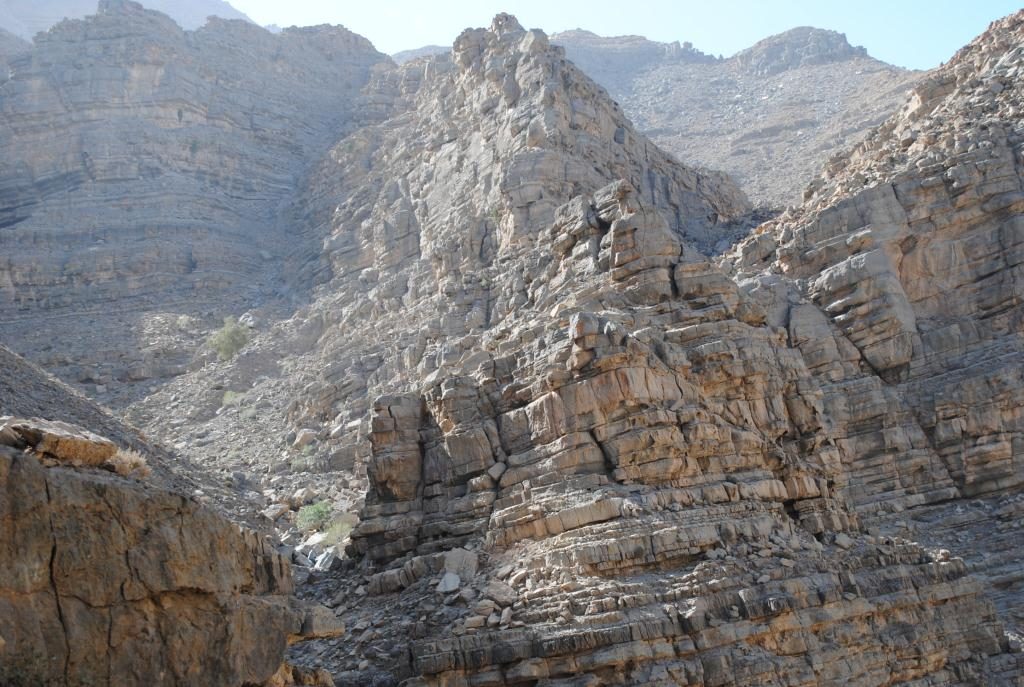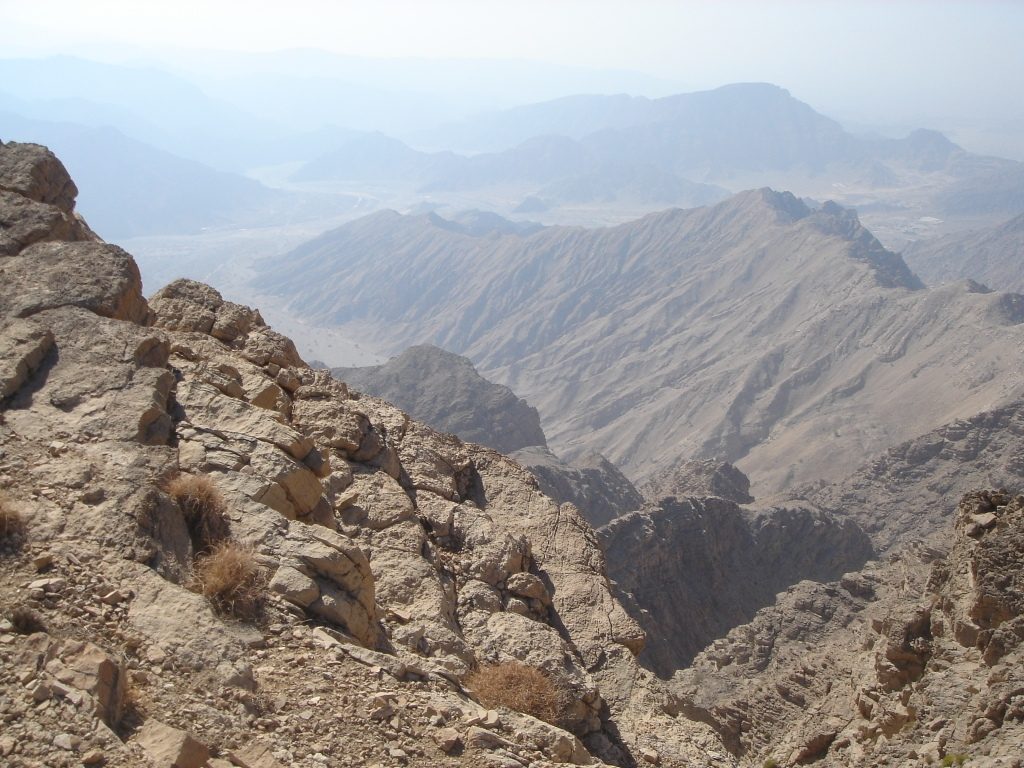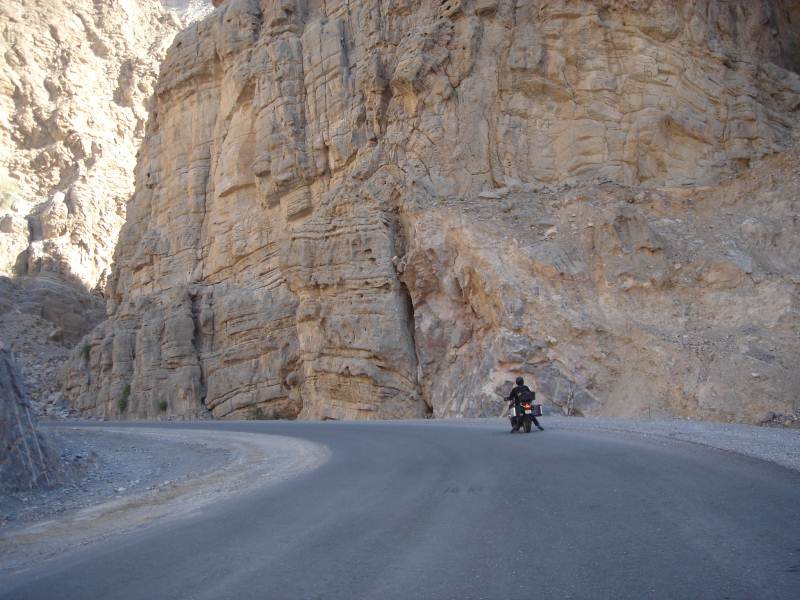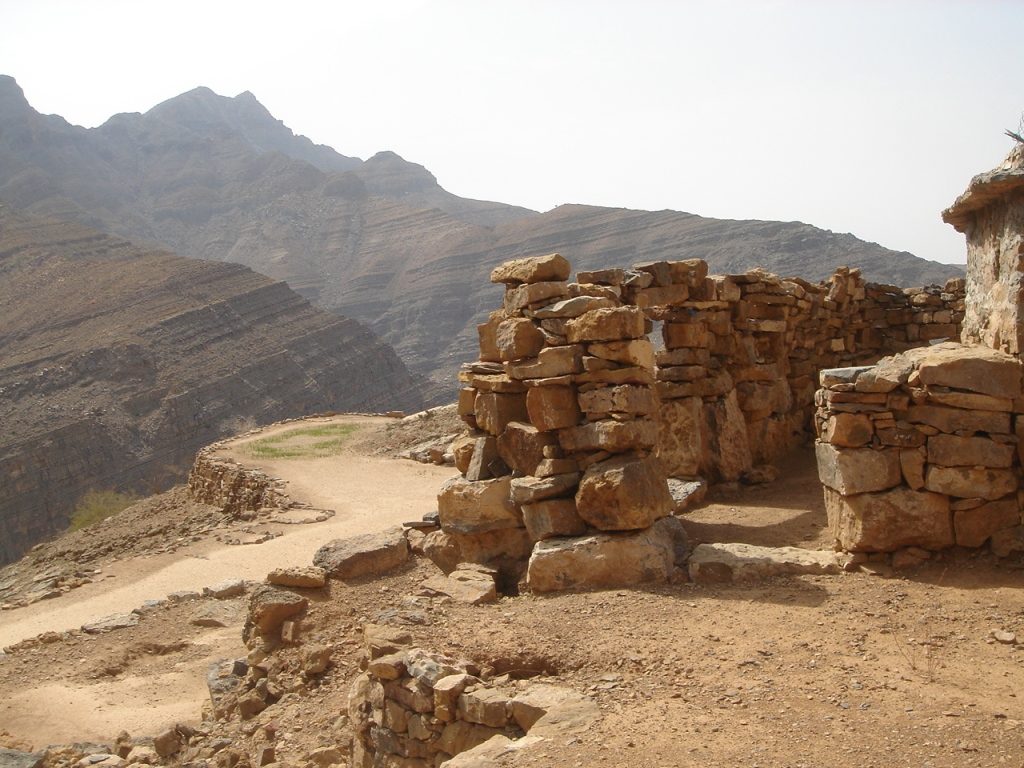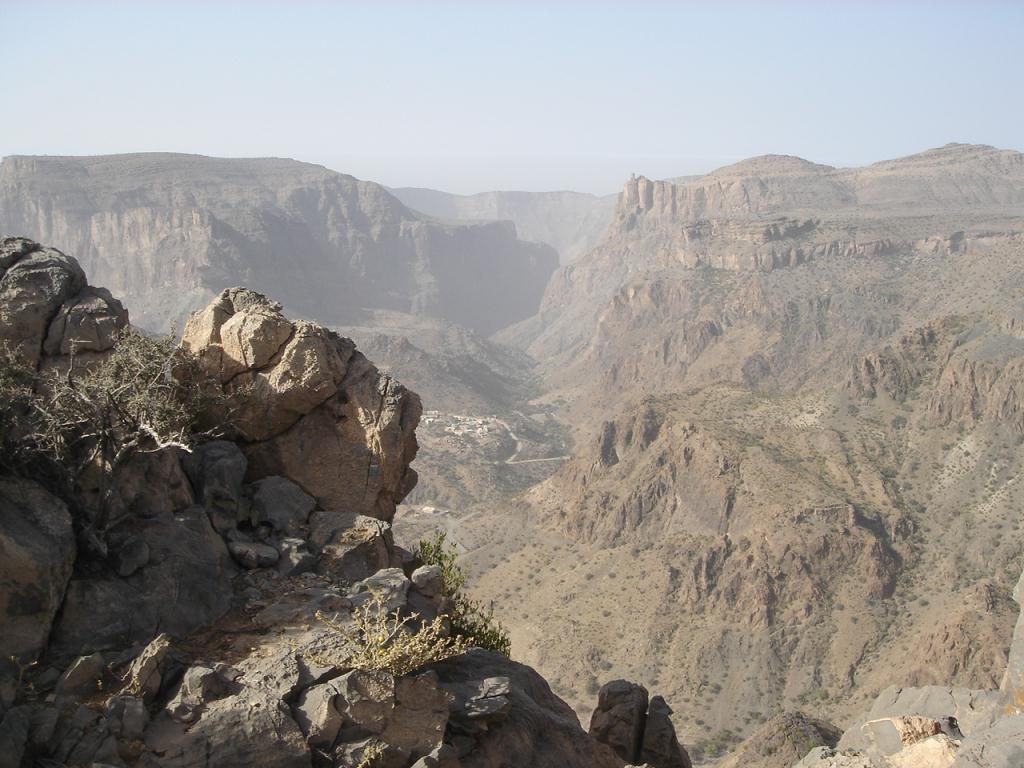Hajar Mountains
The majestic Hajar Mountains (“Hajar” means “stone” in Arabic) start in the northern Musandam peninsula which is part of Oman. They run parallel with the eastern coast of the UAE, and move back into Oman. In the last – albeit largest – bit, the mountain range runs gradually more inland and also becomes wider. The mountains extend for 500 km in total.
The northern part in Oman is known as Ru`us Al-Jibal (= the heads of the mountain): in many coastal places, the slopes drop directly into the sea.
The highest part in the Hajar range is the Jebel Akhdar (= Green mountain) massif – also in Oman- with the highest peak being Jebel Shams (= Sun mountain): 2980 m.
At first sight, the rugged mountainous terrain looks inhospitable and indeed, it is very harsh and difficult to explore. But if you are well prepared, and you venture in the right season when the climate is moderate and friendly, you will have a unique experience.
Ophiolites
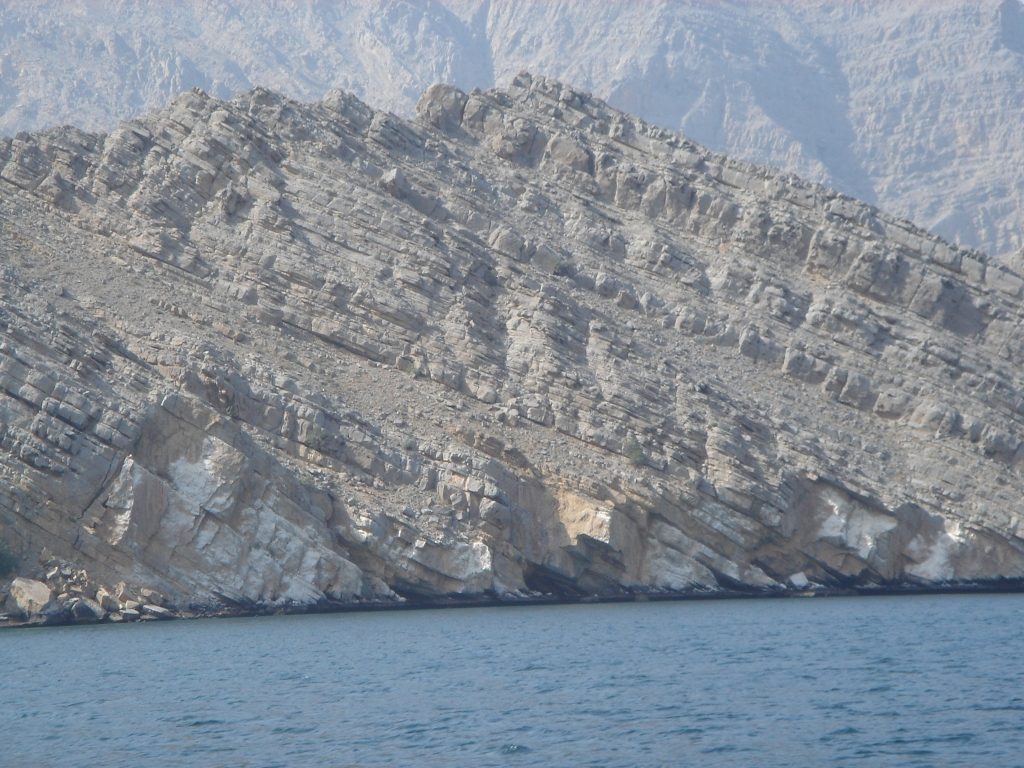
Ophiolites: this very specific and rare geological phenomenon can be found in the Hajar Mountains. Originally formed deep into the earth, these enormous rocks now lie above sea level. The rocks of the mantle and oceanic crust, exposed together at the surface in this way, are collectively called “ophiolites”.
Those of the Hajar Mountains constitute the world’s best preserved, stretching some 500 kilometres from Dibba in the UAE to south east of Muscat in Oman. It is of tremendous interest to geologists.
![]()

